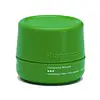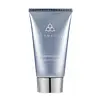What's inside
What's inside
 Key Ingredients
Key Ingredients

 Benefits
Benefits

 Concerns
Concerns

 Ingredients Side-by-side
Ingredients Side-by-side

Water
Skin ConditioningGlycerin
HumectantCaprylic/Capric Triglyceride
MaskingGlyceryl Stearate Se
EmulsifyingIsononyl Isononanoate
EmollientCetearyl Alcohol
EmollientPentylene Glycol
Skin ConditioningPalmitic Acid
EmollientOryza Sativa Bran Water
MaskingTremella Fuciformis Sporocarp Extract
AntioxidantSqualane
EmollientSodium Hyaluronate
HumectantNiacinamide
SmoothingPyrus Malus Fruit Extract
Skin ConditioningCentella Asiatica Leaf Extract
Skin ConditioningLactobacillus Ferment
Skin ConditioningCocos Nucifera Fruit Juice
EmollientCocos Nucifera Water
MaskingBetaine
HumectantStearic Acid
CleansingTocopheryl Acetate
AntioxidantMaltodextrin
AbsorbentCarbomer
Emulsion StabilisingTrisodium Ethylenediamine Disuccinate
Potassium Sorbate
PreservativeSodium Benzoate
MaskingSodium Anisate
AntimicrobialSodium Levulinate
Skin ConditioningMyristic Acid
CleansingPhenoxyethanol
PreservativeEthylhexylglycerin
Skin ConditioningPotassium Hydroxide
BufferingXanthan Gum
EmulsifyingWater, Glycerin, Caprylic/Capric Triglyceride, Glyceryl Stearate Se, Isononyl Isononanoate, Cetearyl Alcohol, Pentylene Glycol, Palmitic Acid, Oryza Sativa Bran Water, Tremella Fuciformis Sporocarp Extract, Squalane, Sodium Hyaluronate, Niacinamide, Pyrus Malus Fruit Extract, Centella Asiatica Leaf Extract, Lactobacillus Ferment, Cocos Nucifera Fruit Juice, Cocos Nucifera Water, Betaine, Stearic Acid, Tocopheryl Acetate, Maltodextrin, Carbomer, Trisodium Ethylenediamine Disuccinate, Potassium Sorbate, Sodium Benzoate, Sodium Anisate, Sodium Levulinate, Myristic Acid, Phenoxyethanol, Ethylhexylglycerin, Potassium Hydroxide, Xanthan Gum
Water
Skin ConditioningGlycerin
HumectantIsodecyl Neopentanoate
EmollientGlyceryl Stearate
EmollientCoconut Alkanes
EmollientGluconolactone
Skin ConditioningSodium Levulinate
Skin ConditioningNiacinamide
SmoothingSyringa Vulgaris Extract
Skin ConditioningCarnitine
CleansingTrehalose
HumectantOpuntia Ficus-Indica Stem Extract
Skin ConditioningAloe Barbadensis Leaf Juice Powder
Skin ConditioningPolyglyceryl-4 Caprate
EmulsifyingCoco-Caprylate/Caprate
EmollientXanthan Gum
EmulsifyingCetyl Alcohol
EmollientStearyl Alcohol
EmollientCarbomer
Emulsion StabilisingMaltodextrin
AbsorbentSodium Benzoate
MaskingSodium Hydroxide
BufferingPotassium Sorbate
PreservativeSodium Anisate
AntimicrobialFarnesol
PerfumingCalcium Gluconate
HumectantPhenoxyethanol
PreservativeLavandula Angustifolia Extract
Skin ConditioningCaprylic/Capric Triglyceride
MaskingCamellia Sinensis Leaf Extract
AntimicrobialMentha Piperita Extract
CleansingRubus Occidentalis Fruit Extract
AstringentCitrus Aurantium Amara Flower Extract
RefreshingPyrus Malus Fruit Extract
Skin ConditioningRosmarinus Officinalis Leaf Extract
AntimicrobialSalvia Officinalis Leaf Extract
CleansingCitrus Aurantium Bergamia Fruit Extract
Skin ConditioningCupressus Sempervirens Leaf Extract
PerfumingWater, Glycerin, Isodecyl Neopentanoate, Glyceryl Stearate, Coconut Alkanes, Gluconolactone, Sodium Levulinate, Niacinamide, Syringa Vulgaris Extract, Carnitine, Trehalose, Opuntia Ficus-Indica Stem Extract, Aloe Barbadensis Leaf Juice Powder, Polyglyceryl-4 Caprate, Coco-Caprylate/Caprate, Xanthan Gum, Cetyl Alcohol, Stearyl Alcohol, Carbomer, Maltodextrin, Sodium Benzoate, Sodium Hydroxide, Potassium Sorbate, Sodium Anisate, Farnesol, Calcium Gluconate, Phenoxyethanol, Lavandula Angustifolia Extract, Caprylic/Capric Triglyceride, Camellia Sinensis Leaf Extract, Mentha Piperita Extract, Rubus Occidentalis Fruit Extract, Citrus Aurantium Amara Flower Extract, Pyrus Malus Fruit Extract, Rosmarinus Officinalis Leaf Extract, Salvia Officinalis Leaf Extract, Citrus Aurantium Bergamia Fruit Extract, Cupressus Sempervirens Leaf Extract
Ingredients Explained
These ingredients are found in both products.
Ingredients higher up in an ingredient list are typically present in a larger amount.
This ingredient is an emollient, solvent, and texture enhancer. It is considered a skin-softener by helping the skin prevent moisture loss.
It helps thicken a product's formula and makes it easier to spread by dissolving clumping compounds.
Caprylic Triglyceride is made by combining glycerin with coconut oil, forming a clear liquid.
While there is an assumption Caprylic Triglyceride can clog pores due to it being derived from coconut oil, there is no research supporting this.
Learn more about Caprylic/Capric TriglycerideCarbomer is a polymer of acrylic acid. Its main role is to create a gel consistency.
A high amount of carbomer can cause pilling or balling up of products. Don't worry, most products contain 1% or less of carbomer.
Glycerin is already naturally found in your skin. It helps moisturize and protect your skin.
A study from 2016 found glycerin to be more effective as a humectant than AHAs and hyaluronic acid.
As a humectant, it helps the skin stay hydrated by pulling moisture to your skin. The low molecular weight of glycerin allows it to pull moisture into the deeper layers of your skin.
Hydrated skin improves your skin barrier; Your skin barrier helps protect against irritants and bacteria.
Glycerin has also been found to have antimicrobial and antiviral properties. Due to these properties, glycerin is often used in wound and burn treatments.
In cosmetics, glycerin is usually derived from plants such as soybean or palm. However, it can also be sourced from animals, such as tallow or animal fat.
This ingredient is organic, colorless, odorless, and non-toxic.
Glycerin is the name for this ingredient in American English. British English uses Glycerol/Glycerine.
Learn more about GlycerinMaltodextrin is a polysaccharide. It is derived from starch such as rice, corn, wheat, or potato starch.
In food, Maltodextrin is used to improve the texture and thicken a product. Due to its structure, it can help create a gel texture. As an emulsion stabilizer, it helps keep the ingredients in a product together.
As a polysaccharide, Maltodextrin has moisturizing properties. Polysaccharides are a type of carbohydrate. The top layer of skin uses polysaccharides to retain water, keeping the skin hydrated.
Maltodextrin is water soluble and has a sweet taste.
Learn more about MaltodextrinNiacinamide is a multitasking form of vitamin B3 that strengthens the skin barrier, reduces pores and dark spots, regulates oil, and improves signs of aging.
And the best part? It's gentle and well-tolerated by most skin types, including sensitive and reactive skin.
You might have heard of "niacin flush", or the reddening of skin that causes itchiness. Niacinamide has not been found to cause this.
In very rare cases, some individuals may not be able to tolerate niacinamide at all or experience an allergic reaction to it.
If you are experiencing flaking, irritation, and dryness with this ingredient, be sure to double check all your products as this ingredient can be found in all categories of skincare.
When incorporating niacinamide into your routine, look out for concentration amounts. Typically, 5% niacinamide provides benefits such as fading dark spots. However, if you have sensitive skin, it is better to begin with a smaller concentration.
When you apply niacinamide to your skin, your body converts it into nicotinamide adenine dinucleotide (NAD). NAD is an essential coenzyme that is already found in your cells as "fuel" and powers countless biological processes.
In your skin, NAD helps repair cell damage, produce new healthy cells, support collagen production, strengthen the skin barrier, and fight environmental stressors (like UV and pollution).
Our natural NAD levels start to decline with age, leading to slower skin repair, visible aging, and a weaker skin barrier. By providing your skin niacinamide, you're recharging your skin's NAD levels. This leads to stronger, healthier, and younger looking skin.
Another name for vitamin B3 is nicotinamide. This vitamin is water-soluble and our bodies don't store it. We obtain Vitamin B3 from either food or skincare. Meat, fish, wheat, yeast, and leafy greens contain vitamin B3.
The type of niacinamide used in skincare is synthetically created.
Learn more about NiacinamidePhenoxyethanol is a preservative that has germicide, antimicrobial, and aromatic properties. Studies show that phenoxyethanol can prevent microbial growth. By itself, it has a scent that is similar to that of a rose.
It's often used in formulations along with Caprylyl Glycol to preserve the shelf life of products.
Potassium Sorbate is a preservative used to prevent yeast and mold in products. It is commonly found in both cosmetic and food products.
This ingredient comes from potassium salt derived from sorbic acid. Sorbic acid is a natural antibiotic and effective against fungus.
Both potassium sorbate and sorbic acid can be found in baked goods, cheeses, dried meats, dried fruit, ice cream, pickles, wine, yogurt, and more.
You'll often find this ingredient used with other preservatives.
Learn more about Potassium SorbatePyrus Malus Fruit Extract is extract from Apples. Apples are rich in Vitamin C, sugars, and antioxidants.
The sugar in Apples are humectants and help hydrate the skin. On top of that, apples also contain some acids, such as malic acid. These acids may have a mild exfoliating effect.
Last, the phytochemicals found in apples are strong antioxidants. These antioxidants help with anti-aging as they protect your skin cells against oxidative damage.
Learn more about Pyrus Malus Fruit ExtractSodium Anisate comes from fennel. It is used as a preservative and to add flavoring.
Sodium Anisate has antimicrobial properties.
Sodium Benzoate is a preservative. It's used in both cosmetic and food products to inhibit the growth of mold and bacteria. It is typically produced synthetically.
Both the US FDA and EU Health Committee have approved the use of sodium benzoate. In the US, levels of 0.1% (of the total product) are allowed.
Sodium benzoate works as a preservative by inhibiting the growth of bacteria inside of cells. It prevents the cell from fermenting a type of sugar using an enzyme called phosphofructokinase.
It is the salt of benzoic acid. Foods containing sodium benzoate include soda, salad dressings, condiments, fruit juices, wines, and snack foods.
Studies for using ascorbic acid and sodium benzoate in cosmetics are lacking, especially in skincare routines with multiple steps.
We always recommend speaking with a professional, such as a dermatologist, if you have any concerns.
Learn more about Sodium BenzoateSodium levulinate is the a sodium salt of Levulinic Acid. If dissolved in an aqueous solution, the two ingredients become identical.
It is a skin conditioning agent, meaning it helps soften and hydrate your skin.
According to Cosmetic Ingredient Review, the highest amounts of sodium levulinate are found in mouthwashes at 0.62%.
Learn more about Sodium LevulinateWater. It's the most common cosmetic ingredient of all. You'll usually see it at the top of ingredient lists, meaning that it makes up the largest part of the product.
So why is it so popular? Water most often acts as a solvent - this means that it helps dissolve other ingredients into the formulation.
You'll also recognize water as that liquid we all need to stay alive. If you see this, drink a glass of water. Stay hydrated!
Learn more about WaterXanthan gum is used as a stabilizer and thickener within cosmetic products. It helps give products a sticky, thick feeling - preventing them from being too runny.
On the technical side of things, xanthan gum is a polysaccharide - a combination consisting of multiple sugar molecules bonded together.
Xanthan gum is a pretty common and great ingredient. It is a natural, non-toxic, non-irritating ingredient that is also commonly used in food products.
Learn more about Xanthan Gum